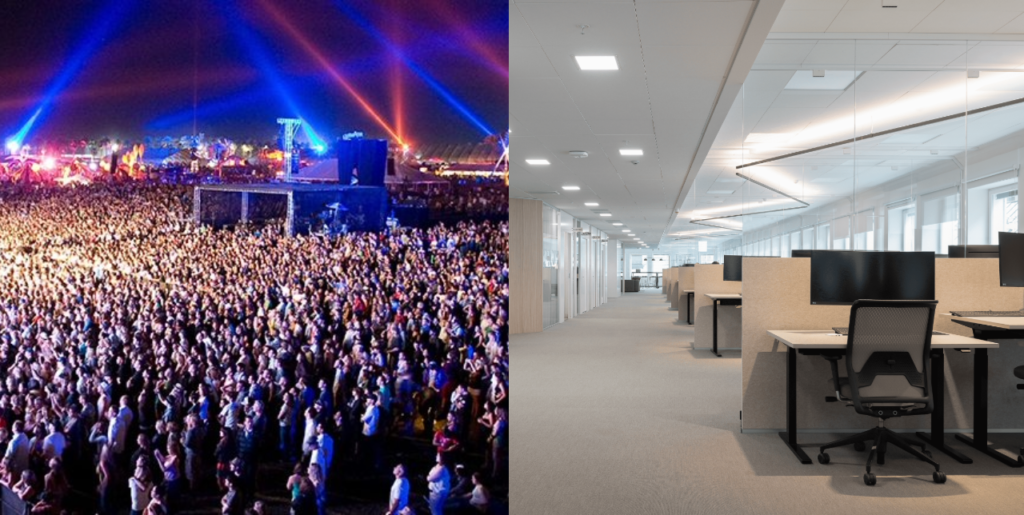Smart buildings #2 - the benefits of adding connectivity to your products
[S
Right now, there is an opening of exceptional magnitude for you as product manufacturer to revitalize your business and outrun your competitors by adding “smart” to your products and services. The question is no longer when buildings are transitioning from dumb to smart – instead it’s how and with what. This article will guide you through the essentials and help you launch your business into action.
SAVINGS UP, COSTS OF ENTRY DOWN
IoT-enhanced solutions that focus on solving real problems for smart buildings is the holy grail for manufacturers wanting to get ahead of the competition. When you digitize your products, you will instantly broaden your present customer focus. Going from selling “just” core-ware to installers, your value-added products and services will instead attract a wider customer base – not just to real estate owners and contractors, but also the end users. To get that first foot in the door you should definitely be able to cut costs for your customers.
The beauty of the IoT and wireless connectivity is that it adds higher flexibility and lower installation costs by, for example, eliminating (or at least lessen) the need for complex cabling.
THE BUSINESS CASE: INCREASED VALUE FOR AN EXTENDED CUSTOMER-BASE
To really understand what IoT and wireless connectivity can bring to the table we will take a brief look at the stakeholders in the smart building ecosystem:
- Construction companies – large-scale multitasking companies that plan and assemble a building. Also responsible for the original sustainability perspective. Overall design together with architects, engineering companies and construction managers
- Real Estate owners (or entrepreneurs) – the buyers of a property. They invest, repair and improve the property in order to sell it for a profit
- Installers – license and sell building equipment, material and systems (cables, clamps, connectors, etc.).
- Building operators and facility managers – rent out space and are responsible for the day-to-day care of the building
- Businesses – lease office space
- Consumers, employees and tenants (surprisingly heavy opinion makers with a strong say-so power)
It’s also important to get an elementary understanding of what the real value of going smart and green is:
- Lower operational costs
- Energy savings (sustainability)
- Increased property value
- Building and asset performance (easier maintenance and repairs)
- Improved occupant comfort, productivity and health
Lower operational costs
Upgradeable software replaces inflexible, cabled and time-consuming tasks. There will be less need for expensive staff that troubleshoot around the clock.
Energy savings and sustainability
After the installation of an automated building system there is a profound reduction in a building’s energy spend and the carbon footprint of the building literally shrinks with every equipment data sensor.
Increased property value
An improvement in technology and sustainability leads to a higher property value as the building now can be certified on a higher level growing rental rates by up to 24.9% compared to a conventional building.
Building and asset performance (easier maintenance and repairs)
An automated asset management system will pay for itself quickly by measuring different property life-cycles, which in turn will lessen expensive repairs down the road.
Improved occupant comfort, productivity and health
This is a pretty obvious one: when a building can keep its tenants comfortable, healthy, productive and happy, the more likely it is that they’ll thrive – and stay.
PICKING THE LOW HANGING FRUITS
The initial steps towards intelligence in buildings are pretty straight-forward; cool the air, turn off the lights, lock the door, alert me when there’s a fire and so on. Upgrades and retrofits of run-of-the-mill systems, like lighting, security, fire detection and HVAC are the true low hanging fruits.
SMART LIGHTING
A smart lighting system retrofitted with very-low-power, short-range wireless technology and non-invasive, low-cost sensors can automatically regulate the energy use by measuring light levels, motion and temperature.
OPTIMIZED HVAC SYSTEMS
The obvious drawback of older legacy HVAC-systems is that they spend extreme amounts of energy that in many countries come from fossil fuels which, as we know, cause high carbon dioxide emissions.
A retrofitted, demand-controlled HVAC-system will automatically set heating (or cooling) to a minimum when employees aren’t there, for example at night. Consequently, when there are zero people in the building, the energy use is also next-to-zero energy. With a demand-controlled HVAC-system in place, a real estate owner can save up to 80% in fan electricity and 40% of heating and cooling energy compared to a constant airflow and unfluctuating temperature.
INDOOR CLIMATE AS A SERVICE
People is a forceful reason to go green. Occupants’ and company employees comfort, health and productivity is a high priority for most real estate owners. A study by Harvard University says that the indoor environment is affecting cognitive function and that better air quality increases the cognitive function performance of employees, suggesting that the same goes for other tenants.
BUILDING SECURITY
Automated intrusion detection systems that are interlinked with other critical building management systems, like fire detection, simplifies security and safety-monitoring of company employees, tenants and building assets. Another important dimension is that they have the potential to save money by preventing unnecessary energy-waste.
AN OPTION-ROADMAP FOR SMART PRODUCT MANUFACTURERS
Depending on what product business your in – smart commercial- or industrial buildings, healthcare or retail – you may have specific requirements of what your IoT-enabled product should deliver. So, in order not to get lost in the mountain of alternatives to digitize your products, we compiled a handy Q&A available in our final article. It is a checklist that gives you an overview of available options and hopefully an idea where to start.
This article is part 2 of 2 of our Smart Building series. Read part 1 Smart buildings to the rescue.
Get our Smart buildings guide:
– Trends, driving forces and how connectivity can add value to your product




